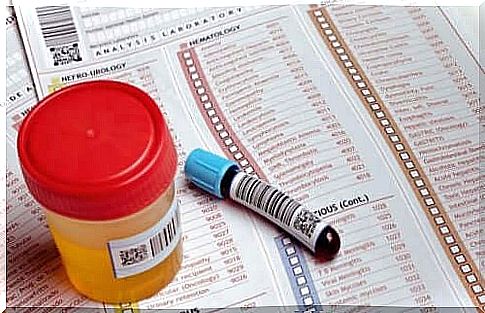Learn All About Urinary Abnormalities

Urine is a fluid the kidneys produce after they filter out organic waste and excess water. Then it reaches the ureters and finally the bladder, where it is stored. It is possible that you have abnormalities in the urine.
Urine is usually 96% water. The other 4% consists of dissolved acids such as:
- urea
- uric acid
- creatinine
- chloride
- and so forth
If you have an abnormality in the urine, your doctor will measure all of these substances. The body excretes urine from the bladder through the urethra. The bladder is an organ that, when working normally, can store up to 170-180 cc of urine in three to five hours.
Urine abnormalities: different aspects
Problems with the drainage of urine

In general, kidney stones are one of the main problems that can alter the drainage of urine.
However, a change in urine output can be due to many different factors or diseases. For example, consider the following:
- For example, the drain can be blocked, usually by stones, but tumors can also cause an obstruction. These changes prevent the bladder from emptying properly.
- Problems with the drainage of urine can also be the result of kidney disease, especially if the patient is suffering from renal failure.
- Infections also affect the drainage of urine, as well as problems related to bladder control, such as overactive bladder, incontinence, and benign prostatic hyperplasia in men.
Urine abnormalities due to compositional changes
As we explained above, although it is mainly water, urine also contains other elements. The levels of these components can rise or fall, indicating that something is not working properly.
Urinalysis measures these components to help diagnose some diseases. Here are some urinary components that may be subject to change:
- proteinuria. This means increased protein levels in the urine. It may indicate the presence of diseases such as diabetes, certain intoxications, glomerulonephritis or urinary tract infections.
- glucose. This is the presence of glucose in the urine. It is usually indicative of patients with poorly controlled diabetes and some kidney diseases.
- Pyria. This refers to the presence of pus in the urine.
- Hematuria. This may indicate urinary tract infections, kidney stones or urinary tract cancer. It is the presence of blood in the urine.
- Bacteriuria. It is the presence of bacteria in the urine. This could be a sign of an infection in the urinary tract or intestinal tract.
Abnormalities due to changes in urine volume
The urine volume may also vary. Anuria is when you don’t produce urine. In contrast, polyuria is when you urinate more than normal. Another urinary abnormality is oliguria. This means that there is a low urine output. Also, we should mention urinary retention, which is the inability to drain urine.
Finally, we also have urinary incontinence, which is the involuntary leakage of urine. In this case, it’s the difficulty of controlling the amount of urine you pass.
Urine abnormalities due to the color of the urine
The most common abnormalities in urine color are:
- Dark yellow urine is usually a sign of dehydration.
- Orange urine may be due to excessive consumption of foods rich in beta-carotene. It can also be caused by taking certain medications.
- Red or pink urine is usually due to the presence of blood in the urine. Doctors call this hematuria.
- Purple urine usually occurs in patients with a urinary catheter. This is due to the transformation of certain pigments by the bacteria in the catheter tube.
- Whitish urine or albuminuria. This can be due to a severe urinary tract infection or lymphatic fistula, especially in cases of neoplasia or abdominal trauma.
If the color change persists for more than three days, we recommend that you see a doctor. They will likely run some tests to diagnose the problem causing the abnormality. It is also advisable to be examined if you have symptoms of other urinary abnormalities.









